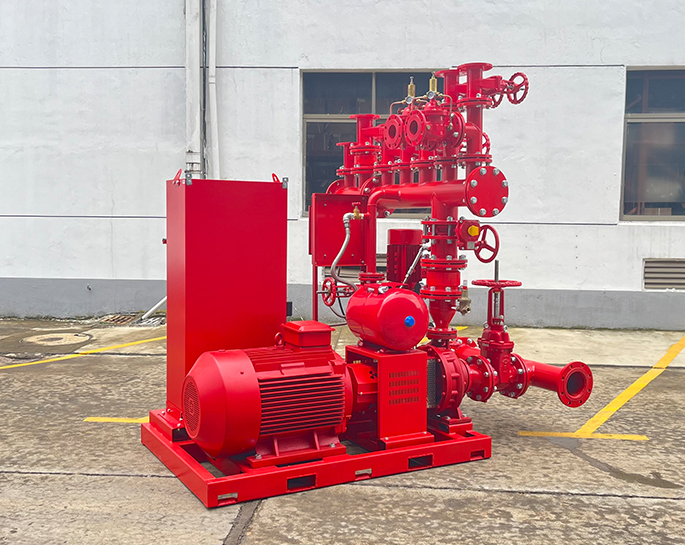A fire pump system failure is a serious concern as it can compromise the effectiveness of the entire fire protection system. Responding promptly and effectively is crucial to minimizing potential damage and ensuring the safety of occupants. Here are steps to take during a fire pump system failure:
### 1. **Activate Emergency Response:**
- If the fire pump system fails or malfunctions, activate the emergency response plan immediately. This may involve sounding alarms, notifying emergency services, and initiating evacuation procedures if necessary.
### 2. **Investigate the Cause:**
- Determine the cause of the fire pump system failure. This may involve a visual inspection, reviewing system logs, and conducting diagnostic tests. Common causes of failure include power outages, pump malfunctions, control system issues, or water supply problems.
### 3. **Switch to Secondary Pump or Water Supply:**
- If the facility has a secondary fire pump or an alternative water supply, switch to it if feasible. This backup system can provide temporary support until the primary system is restored or repaired.
### 4. **Notify Relevant Personnel:**
- Inform relevant personnel, including building management, fire safety personnel, and maintenance staff, about the fire pump system failure. Coordinate efforts to address the issue and implement any contingency plans in place.
### 5. **Contact Service and Maintenance Providers:**
- Contact the service and maintenance providers for the fire pump system. They may be able to provide remote assistance or dispatch technicians to address the issue promptly. Ensure that emergency contact information for service providers is readily available.
### 6. **Document the Failure:**
- Document the details of the fire pump system failure, including the time, date, and circumstances. This information can be valuable for investigating the incident, determining the root cause, and implementing preventive measures in the future.
### 7. **Implement Temporary Measures:**
- If the fire pump system failure cannot be resolved immediately, consider implementing temporary measures such as deploying portable fire extinguishers, hose lines, or other firefighting equipment to compensate for the lack of water pressure.
### 8. **Evacuate if Necessary:**
- If the fire pump system failure poses an immediate threat to life safety and the fire cannot be controlled by other means, evacuate the building or affected areas in accordance with established evacuation procedures.
### 9. **Address Water Supply Issues:**
- If the failure is related to the water supply, such as a main break or loss of water pressure, work with local water authorities to address the issue. Consider using alternative water sources if available.
### 10. **Restore or Repair the System:**
- Once the cause of the failure is identified, work to restore or repair the fire pump system promptly. This may involve replacing faulty components, restoring power, or addressing any issues that led to the failure.
### 11. **Conduct a Post-Incident Review:**
- After the situation is resolved, conduct a post-incident review to analyze the root cause of the fire pump system failure. Use this information to improve system reliability, update emergency response procedures, and implement preventive measures.
### 12. **Review and Update Emergency Plans:**
- Based on the lessons learned from the incident, review and update emergency response plans, including procedures for addressing fire pump system failures. Ensure that personnel are trained on any changes to the emergency response protocol.
In the event of a fire pump system failure, a swift and coordinated response is essential. Regular maintenance, testing, and monitoring of the fire pump system can help prevent failures, but having well-defined emergency response procedures is crucial for mitigating the impact of any unexpected issues.



